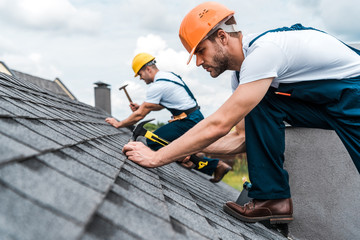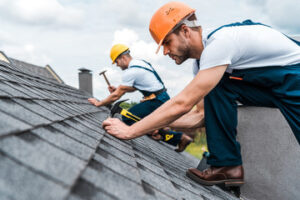In a competitive online landscape, SEO services provide a unique way to increase your website visibility and brand recognition. A successful SEO campaign includes a comprehensive strategy that targets keywords most relevant to your business.
SEO strategies catapult your brand to the top of search engine results pages, attracting traffic from customers actively seeking products or services like yours. This leads to valuable conversions and sales. Contact Roseville SEO Company for professional help.
SEO services boost the number of qualified leads that visit your website and ultimately convert into paying customers. This is a proven, cost-effective strategy that can help your business thrive in today’s competitive landscape.
Search engine optimization is a complex process that requires expert knowledge of website design, content marketing, link building, and keyword research. When done properly, this can elevate your website’s visibility and organic traffic by ranking it higher in search results pages (SERPs).
But how does a search engine optimization company exactly do that? Search engines regularly update their algorithms to deliver users the most relevant and valuable results. These changes are based on factors like technological advancements, user behavior shifts, and emerging trends. An experienced SEO agency will be well-versed in these trends and ensure that your marketing efforts align with the latest best practices.
The top spots on SERPs receive the most traffic, so it’s important that your website is visible to as many potential customers as possible. Achieving a high search rank with an SEO company is critical to your online visibility, as most customers won’t scroll past the first page of results. SEO services optimize your site for the search algorithms used by Google and other major search engines to improve your chances of landing a spot on the first page.
In a world where 89 percent of customers research products or businesses online before making a purchase, it’s more crucial than ever to have a robust digital presence. SEO is a key component of any successful online marketing campaign, but it can be challenging to manage on your own. A trusted SEO agency can handle the heavy lifting, allowing you to focus on growing your business.
SEO is a powerful tool that can transform your business by driving a surge in organic traffic, targeting your ideal audience, and elevating your website’s visibility. With these benefits, it’s no wonder that 61% of marketers say improving their SEO is their top inbound marketing priority. SEO is an essential marketing strategy for any type of business, and it’s one of the most cost-effective ways to grow your company.
Increased conversions
When a potential customer sees your website at the top of their search results, they will trust that you are an expert in your industry. This makes them more likely to make a purchase or subscribe to your newsletter, which increases your revenue. SEO also builds brand visibility, which helps your business gain a competitive edge over other businesses that don’t have a strong online presence.
Unlike paid advertising, SEO is a long-term investment that continues to produce results after the initial campaign. It’s important to choose a trusted partner that will work with you and your team to support your site goals. An experienced agency will know the best ways to optimize your site and create high-quality content. They can also monitor and correct any issues that might affect SEO performance.
The right SEO company can also improve the user experience of your site, which will increase conversions. This means creating a website that is easy to navigate, fast-loading on desktop and mobile devices, and contains relevant and helpful information.
Another way SEO can help increase conversions is by optimizing landing pages to match user intent. This involves using keywords that are relevant to the product or service, and providing a clear call to action to encourage visitors to take the desired action on the page. This type of strategy is a great way to boost conversions without increasing the number of page sessions.
In addition to improving user experiences, SEO can reduce marketing costs by reducing the need for paid advertising. This helps companies increase their profits and remain competitive in the market. SEO also helps to improve the quality of traffic and lowers the bounce rate, which can lead to more sales and leads.
If you’re looking for an SEO company that will help you increase your search engine visibility and boost your sales, contact Gen3 Marketing. We can schedule an initial consultation and discuss your business needs to determine if our services are the best fit for you. We offer transparent pricing and will never promise something that is unrealistic. We understand that the SEO landscape is constantly changing, and our experts will work with you to align your website with these changes as they occur.
Increased brand awareness
In a world where “Googling it” is second nature, SEO is a critical tool for growing a business. It can help you establish a solid online presence, drive more targeted traffic to your website, and ultimately increase brand awareness. The best SEO companies will have a deep understanding of your audience, and use that knowledge to help you reach your target audience.
SEO strategies are smart investments for businesses that want to strengthen branding and gain recognition without spending a fortune on media marketing. They will leverage organic search engine optimization, content marketing, and Pay-Per-Click advertising (PPC) to increase your brand visibility and build trust with your audiences.
An effective SEO strategy will focus on keywords and user experience, helping your site rank higher in the search engine results pages. As a result, your website will be more visible to potential customers and will be more likely to convert into sales.
A professional SEO company will develop an individualized strategy for your business and use data-driven insights to optimize your website. They will take into account your industry, location, and goals to improve performance and rankings. They will also monitor your progress and provide regular reports to keep you updated.
The best SEO services will work to improve your website’s ranking by implementing technical changes and creating high-quality content. They will also promote your site through social media, PPC ads, and email campaigns. The duration of an SEO campaign varies depending on your budget and desired results, but most companies can expect to see noticeable improvements within a few months.
An experienced SEO company will also be able to optimize your website for mobile devices, so it is easy to navigate on smartphones and tablets. They will also ensure that your content is relevant and provides answers to user queries. This will increase your chances of showing up in local searches and attracting nearby customers.
A top-ranked site is one that offers comprehensive, relevant, and up-to-date information. It will have content that addresses the needs of your audience and demonstrates your expertise in your industry. As a result, your website will become the go-to resource for customers in your niche and will boost your credibility and legitimacy.






 Hiring a professional is the best option if you want to build a boat dock. Professional dock builders are well-versed in shoreline management techniques and the most recent materials. They are also well-versed in various dock designs. Beautiful designs can be found online, but you must gain experience building docks to choose the right one for your property. Hiring a professional at
Hiring a professional is the best option if you want to build a boat dock. Professional dock builders are well-versed in shoreline management techniques and the most recent materials. They are also well-versed in various dock designs. Beautiful designs can be found online, but you must gain experience building docks to choose the right one for your property. Hiring a professional at